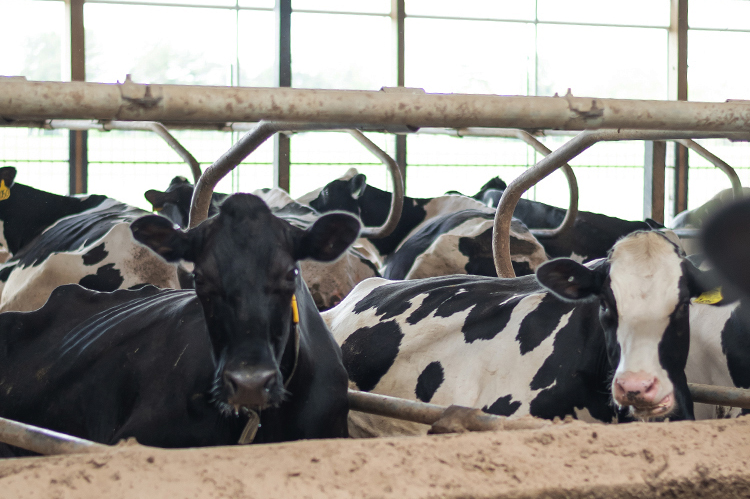
If you bed with recycled sand or are thinking about it, you’re in good company. A study in 2014 by the National Animal Health Monitoring System estimated 26% of U.S. dairy operations use sand bedding.1
Sand has become the bedding material of choice for high-producing farms for good reason. Research shows:
- About a 2,400 pound-milk production advantage for herds using sand bedding versus manure solids and about an 1,800-pound milk production advantage for cows on sand bedding versus organic bedding (over mattresses).2
- Cows spend about one hour more per day lying on sand bedding than other bedding options.2
Here are a few hints to help you get the most benefit from sand bedding on your dairy farm.
1. Have a plan to manage sand-laden manure.
Numerous reliable methods for handling sand-laden manure are available. Sand is abrasive, so choose equipment designed and proven to withstand the abrasiveness of sand. Also remember that sand settles, especially after dilution water is added. Sand-manure separation systems are an option for dairy cow manure management where sand is used for bedding.
2. Design stalls for comfort and hygiene.
Design beds so cows are indexed in the stall, ensuring she’s lying correctly in the stall to avoid urine and feces. Size stalls appropriately for the cows in your herd – not too big and not too small. Stall design help is available from experts at the University of Wisconsin or Penn State University.
3. Frequently fill stalls with sand and level beds.
Ideally, freestalls contain loose sand bedding that is 8 to10 inches deep. For every 3 inches of sand lost, lying time decreases by one hour. Most farms add fresh material two to three times a week and groom beds at each milking.
4. Seek quality sand
Not all sand is created equally, nor is “free” sand always free. Beware of inexpensive or “free” sand. Concrete sand is a commonly accepted, readily available sand. Mason sand is another standard sand product and is finer than concrete sand.
5. Don’t skimp on sand.
Plan to use about 50 pounds of sand per cow per day. You need to fill the volume for 12-inches by 12-inches by 6-inches deep. Consider cows entering and exiting a stall at least three times per day and it’s easy to see why you need to replenish sand often.
To learn more, check out this webinar. Or visit McLanahan for more information.
1 Henderson H, Paudyal S. 2019. Management of sand bedding on dairy farms: Part I. Texas AgriLife Extension. Available at: https://texasdairymatters.tamu.edu/files/2019/07/Mangement-of-Sand-Bedding-on-Dairy-Farms.-Part-I.pdf
